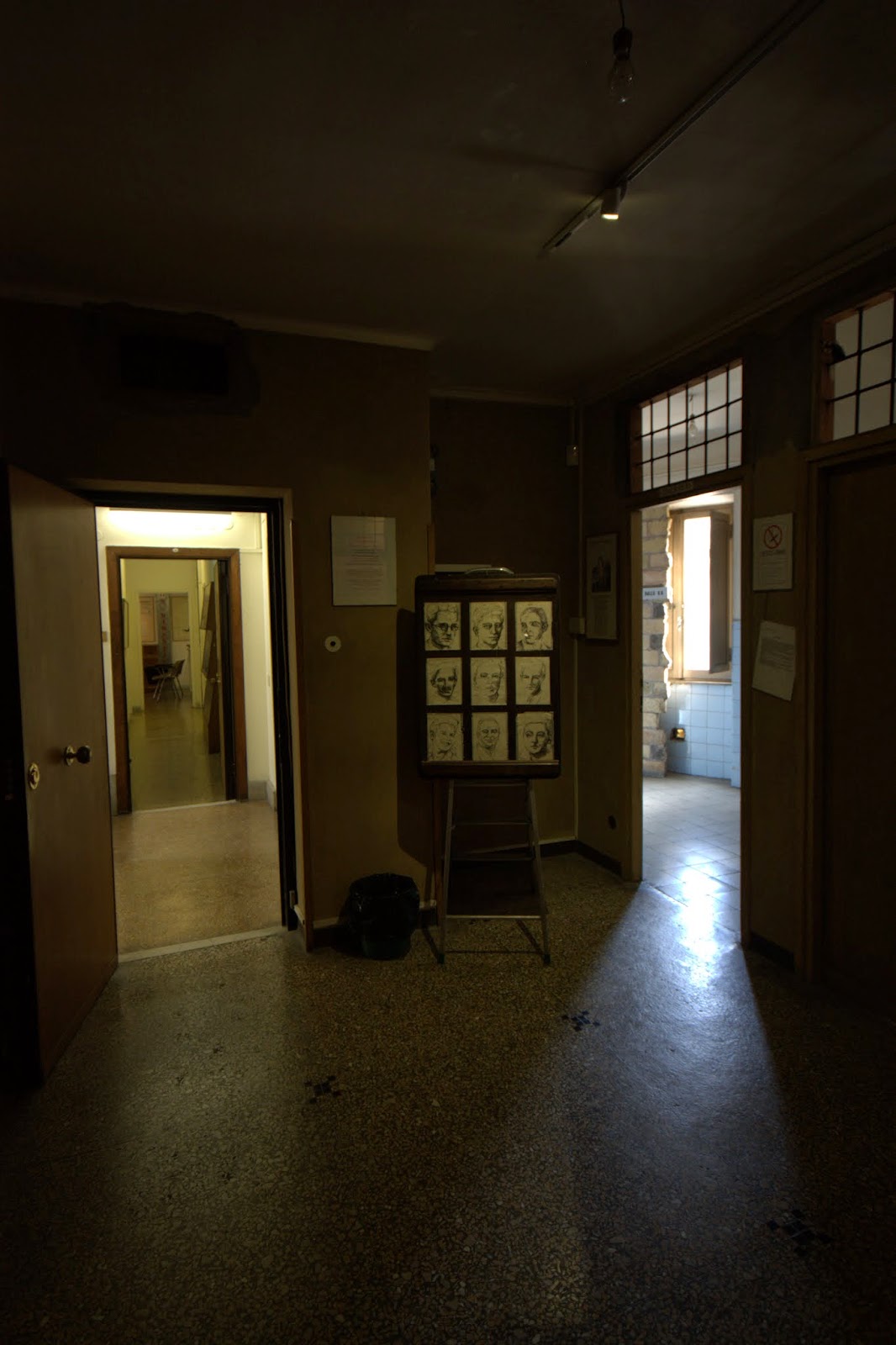Both Ruth Lo, doctoral candidate at Brown and a two-year graduate fellow at the Academy who is researching her dissertation on architecture, food, and urbanism under fascism, were struck by a couple of things. First, is the ancient nature of the exhibits. It seems as if the exhibits were made decades ago and have rarely been updated, if at all. This might be of interest to museologists, but makes for fairly grim experience for those expecting new interpretation, the use of digital tools, higher quality images, and so on. Most of what is on the walls are photocopies of documents and images.
But of much greater concern for us was the fact that the museum, while trying to use this particular prison to tell the story of the Nazi occupation, pointedly ignored the fact that Italy was the prime ally of Nazi Germany. Going from room to room -- the exhibits are displayed in the former prison cells -- you would think that this was just another country invaded by the "ferocious" (a word used in the memorial plaque outside the building) Nazis, innocent victims of a merciless tyrant. This museum is quite clearly, deliberately, and consistently about Nazi invasion and aggression, with not a word about the Italian alliance with the Nazis, how fascists had borrowed from Hitler's playbook in how to oppress dissent and punish Jews and others, and how Mussolini had laid the groundwork for Nazi actions in Rome. My favorite image, which is offered without comment in an exhibit case, is a cartoon image of Hitler as a snake charmer, with the black snakes of Italian fascists rising out of a basket. While produced by partisans as a critique of fascism, the image nonetheless conveys the sense that Italy was relatively harmless until awakened by the magical call of Hitler's song.
I have noted in previous posts, that when I have asked Italians where I should go to understand the rise of fascism, they have pointed me to this museum. "Go to the Via Tasso museum." But the rise and rule of Mussolini and Italian fascism is exactly what you will not find at the Museo Storica della Liberazione. Is till search for such a place. Perhaps in a few years, we will find such an institution in the most unlikely place of all, Mussolini's hometown of Predappio.






No comments:
Post a Comment